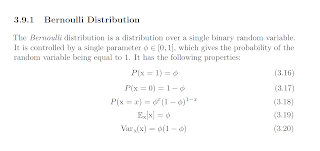AI 從頭學(二六):AlexNet
2017/05/31
前言:
講解 AlexNet,主要是為 Caffe 的實作課程鋪路。
-----
Summary:
AlexNet [1] 扮演承先啟後的角色 [2]-[4],是現代深度學習網路的基礎。相關卷積神經網路的簡介,可以參考之前的文章 [6]-[10]。
本文介紹 AlexNet 使用的一些技巧,包含 LRN [11], [12]、ReLU [13]、Pooling [14]、Dropout [15]-[18]等。
-----
AlexNet 是現代大型卷積神經網路的濫觴 [1],自2012年發表以來,到筆者寫稿時間已經有超過12000的引用,粗估每個月有200次引用。我們大約可以說,LeNet [3] 引起機器學習界對於神經網路的關注,AlexNet 引起學術界對深度學習的關注,而 AlphaGo [4] 則引起全世界的人對人工智慧的好奇。
在以問題進入 AlexNet 之前,先說明何謂 Top-1 與 Top-5 [1]。Top-1 的錯誤率指的是圖片正確的標籤是否被準確預測。Top-5 的錯誤率則是,如果你預測的前五個選項包含正解,則此次的預測就算正確。
下面以七則問題來解釋 AlexNet。
-----
Question
Q1: Structure
Q2: GPU
Q3: Augmentation
Q4: LRN
Q5: ReLU
Q6: Pooling
Q7: Dropout
-----
Q1: Structure
AlexNet 的架構,大致可以想像成比較「巨大」的 LeNet,參考圖1.1 與 圖1.3。包含輸入層、卷積層、池化層、全連接層、輸出層等。另外有些層後面也會使用激活函數。2013年提出的 ZFNet則修改了一些參數,提升不少效能,參考圖1.2 與 圖1.4。
-----
Fig. 1.1. AlexNet [1].
Fig. 1.2. Modification of AlexNet [2].
Fig. 1.3. LeNet [3].
Fig. 1.4. Architectural changes of AlexNet [2].
-----
Q2: GPU
當時 AlexNet 率先使用 GPU 並獲得極大的成功。GPU 使用兩塊,而線條與顏色的 C1 filters 每次都會落在不同的 GPU 上 [7],是值得思考的問題。
-----
Q3: Augmentation
資料擴增有助於降低 overfitting,也就是提升測試時的準確性。由於在 CPU 而不是 GPU 上做,所以對於整體計算時間,可說沒有影響。
第一個方法是 horizontal reflections,也就是左右翻轉。
第二個方法是 altering the intensities of the RGB channels,使用 PCA 改變一點顏色。此處原文並未引用論文,雖然影響不小,對 Top-1 有1%,這邊我們就帶過。
-----
Q4: LRN
Local response normalization (LRN),局部反應標準化。
這點值得一提。
圖2.1的公式有點複雜,所以我們可以先看看它的靈感來源,從最早的圖2.3先看好了。這是一個 V1-like 的模型,也就是它模仿視覺皮層的第一層的反應。主要概念是減去平均值然後再標準化。圖2.3跟圖2.2都是處理對比,圖2.1由於沒有減去平均值,所以他說他是在處理亮度。裡面的參數是作者調出來的。
Fig. 2.1. Local response normalization, p. 4 [1].
Fig. 2.2. Local contrast normalization, p. 3 [11].
Fig. 2.3. Local input divisive normalization, p. 5 [12].
-----
Q5: ReLU
ReLU 是激活函數的一種,近年來比較多人使用。細節可以參考 [13]。
-----
Q6: Pooling
一般池化區不重疊 [14]。本論文使用重疊的方法,Top-1 錯誤率降低 0.4%,Top-5 降低 0.3%。
-----
Q7: Dropout
很快就講到 dropout 了。Dropout 是很簡單的概念,用在全連接層上。
參考圖3.1,在訓練時丟棄每層上面一些節點,每次丟棄的點是隨機選出,這樣等於每次是在不同的網路上訓練,可以有效避免 overfitting。
圖3.2講的是如果某個節點在訓練時出現的機率是p,由於測試時全部節點都保留,所以權重w要乘上p。
圖3.3是公式,這邊要先講解圖3.5比較清楚。
圖3.5左方是傳統的神經網路,如果我們先隨機產生一個值,1的機率是p,0的機率是(1-p),然後把值乘上權重再加總,這等於說有乘1被保留,乘0被丟棄,這樣就同時說明了圖3.3的公式與圖3.4的 Bernoulli distribution。
[16] 有深入的說明,[17], [18] 則是簡易的解說。Dropconnect [17] 則是 dropout 的特殊型 [16],雖然 [17] 聲稱它是一般化,我支持 [16] 的論點。
圖3.6是幾種激活函數搭配 drop 的比較,有意思的是 tanh 搭配 dropout 之後反而變差了!
Fig. 3.1. Dropout neural net model, p. 1930 [15].
Fig. 3.2. A unit at training time and at test time, p. 1931 [15].
Fig. 3.3. Formulae of a standard and dropout network, p. 1933 [15].
Fig. 3.4. Bernoulli distribution, p. 62 [16].
Fig. 3.5. Standard and dropout network, p. 1934 [15].
Fig. 3.6. Drop and activation function p. 5, [20].
-----
結論:
AlexNet 後續的 ZFNet、VGGNet 等都繼承了它的架構,即使是另一個路線的 GoogLeNet,也使用了它的技巧如 dropout 等 [8],可見 AlexNet 的成功!
-----
References
[1] 2012_Imagenet classification with deep convolutional neural networks
[2] 2014_Visualizing and understanding convolutional networks
[3] 1998_Gradient-Based Learning Applied to Document Recognition
[4] 2016_Mastering the game of Go with deep neural networks and tree search
[5] AI從頭學(一二):LeNet
http://hemingwang.blogspot.tw/2017/03/ailenet.html
[6] AI從頭學(一三):LeNet - F6
http://hemingwang.blogspot.tw/2017/03/ailenet-f6.html
[7] AI從頭學(二五):Kernel Visualizing
http://hemingwang.blogspot.tw/2017/05/aikernel-visualizing.html
[8] AI從頭學(一八):Convolutional Neural Network
http://hemingwang.blogspot.tw/2017/03/aiconvolutional-neural-network_23.html
[9] AI從頭學(一一):A Glance at Deep Learning
http://hemingwang.blogspot.tw/2017/02/aia-glance-at-deep-learning.html
[10] AI從頭學(二六):Aja Huang
http://hemingwang.blogspot.tw/2017/05/aiaja-huang.html
[11] 2009_What is the best multi-stage architecture for object recognition
[12] 2008_Why is real-world visual object recognition hard
[13] mAiLab_0005:Activation Function
http://hemingwang.blogspot.tw/2017/05/mailab0005activation-function.html
[14] mAiLab_0006:Pooling
http://hemingwang.blogspot.tw/2017/05/mailab0006pooling.html
[15] 2014_Dropout, a simple way to prevent neural networks from overfitting
[16] 2016_Deep Learning
[17] 2013_Regularization of neural networks using dropconnect
[18] 2013_Maxout networks

















































